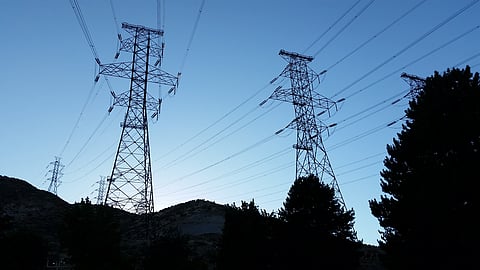
- NEWS
- the EDIT
- COMMENTARY
- BUSINESS
- LIFE
- SHOW
- ACTION
- GLOBAL GOALS
- SNAPS
- DYARYO TIRADA
- MORE

Power consumers should brace to endure an extended run of tight power supply, which could last until May as the harrowing impact of El Niño starts to bite.
A report by the Manila-based think tank Institute for Climate and Sustainable Cities (ICSC) titled "Philippine Power Outlook: Reviewing the Adequacy of Power Supply for April to June 2024," revealed that power supply, especially in the Luzon grid from 13 to 26 May, could likely remain thin.
"As El Niño reduces the available capacity from hydroelectric power plants, all baseload power plants need to be compliant with the approved Grid Operating and Maintenance Program of the National Grid Corporation of the Philippines (NGCP) and DOE," ICSC chief data scientist and co-author of the report Jephraim Manansala said.
"Any unplanned outages may further deplete operating reserve levels and affect the grid's reliability," Manansala added.
Extended alert
For the second straight day, a yellow alert was raised in Luzon from 1:00 p.m. to 11:00 p.m. as of 7:00 p.m. on Wednesday.
This was primarily due to the 18 power plants that went on forced outage, and three others that ran on derated capacities, which slashed 1,969.3-megawatt capacity from the grid.
According to NGCP, the available capacity of the Luzon grid was only 13,607 megawatts, while peak demand was recorded at 12,874 megawatts.
It left only a margin of 733 megawatts.
Similarly, Visayas Island was initially placed under yellow alert from 1:00 p.m. to 10:00 p.m. as 13 power plants remained on forced outage while 5 others ran on derated capacity, which cut about 698 megawatts of capacity from the grid.
However, by 7:00 p.m. yesterday, the NGCP raised a red alert from 5:00 p.m. to 9:00 p.m. and revised the yellow alert to between 9:00 p.m. and 10:00 p.m.
In Visayas, the available capacity was only 2,713 megawatts but the peak demand was logged at 2,523 megawatts, which left only a 190-megawatt margin.
Recommendations raised
Amid the fluctuating power supply, the ICSC said that an Interruptible Load Program (ILP) can be implemented to augment the power supply during yellow or red alerts.
However, resorting to ILP means that the power supply has already deteriorated, signaling the grave reality of our power supply's vulnerability.
ICSC also recommended demand-side management as an immediate measure to address looming power issues this quarter, highlighting the need for contribution and collaboration among all stakeholders, especially the government, power plant operators, and consumers, to ensure more affordable, reliable, and secure energy for all Filipinos.
In a media briefing, Meralco spokesperson Joe Zaldarriaga said the industry should work on generating more capacity to avert a power crisis.
"Everybody agrees that what we need is additional [power] capacity in the system. That means more power plants going on stream, especially new ones," Zaldarriaga said.
"Since we were forced to deal with manual load dropping, the demand has outstripped the supply. If that is the situation, we have to try and shape the demand through various initiatives," he added.
Meanwhile, the Philippine Independent Power Producers Association clarified that the majority of the 19 power plants in the Luzon grid on outage are hydro plants, which outages can occur during summer when water levels are low.
It added that its member-generators have submitted the reports required in instances of unplanned outages and continue to prioritize efforts in further strengthening the resilience of their generation assets.
"However, additional capacities are needed, supported by policies conducive and fair to capital-intensive investments. Towards this end, the current regulatory framework relating to merchant plants, government approvals, price caps, and the reserve market may be enhanced to allow economically feasible operations by investors," PIPPA said.
